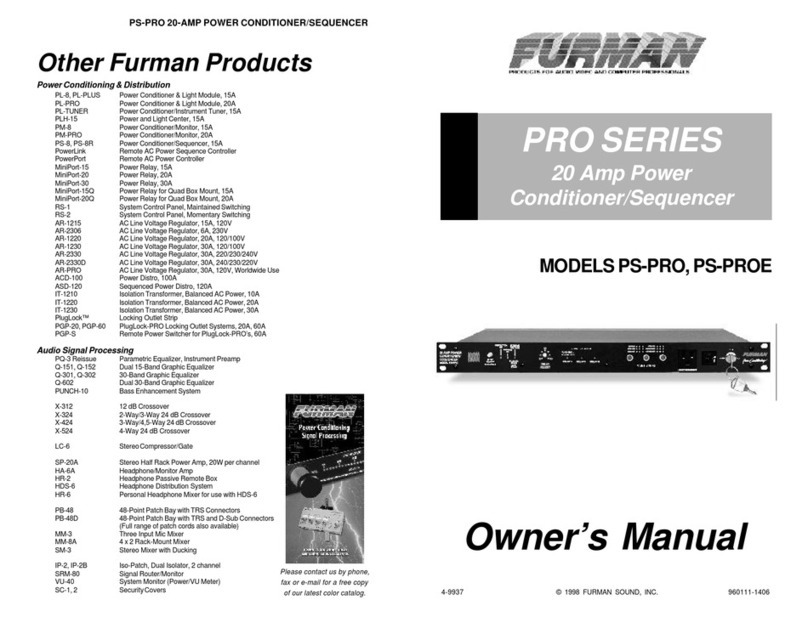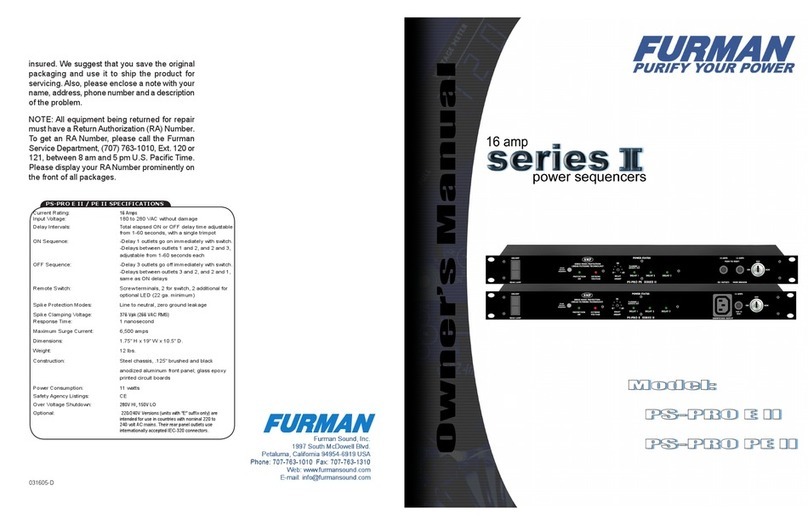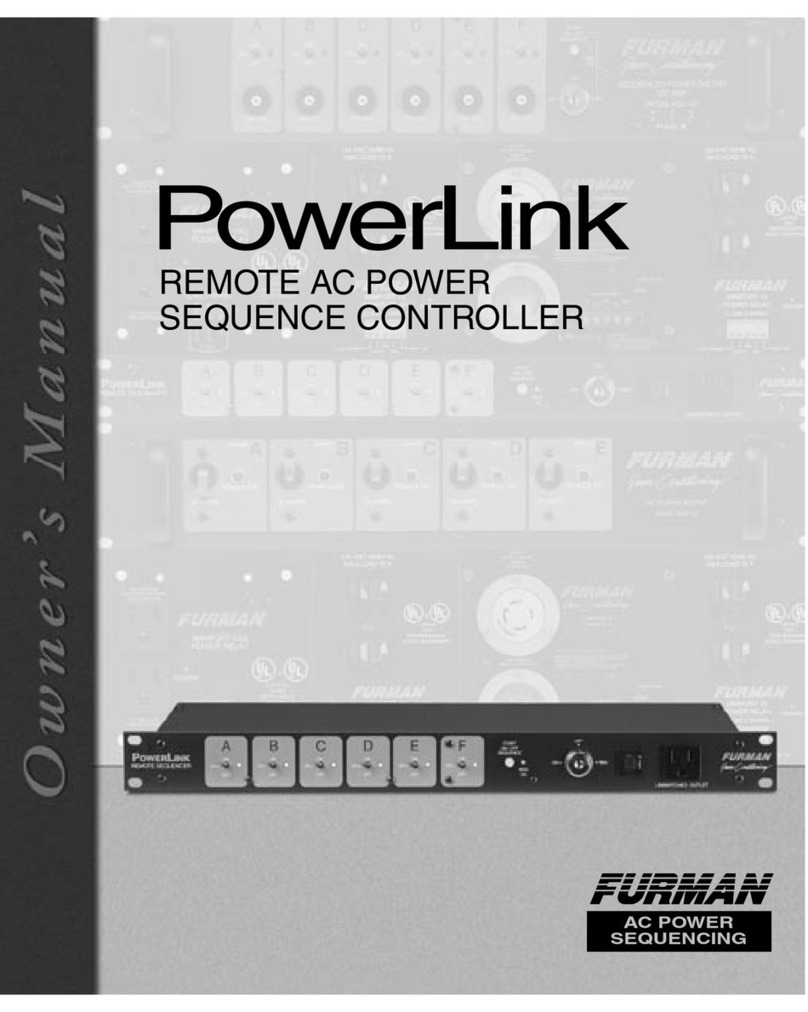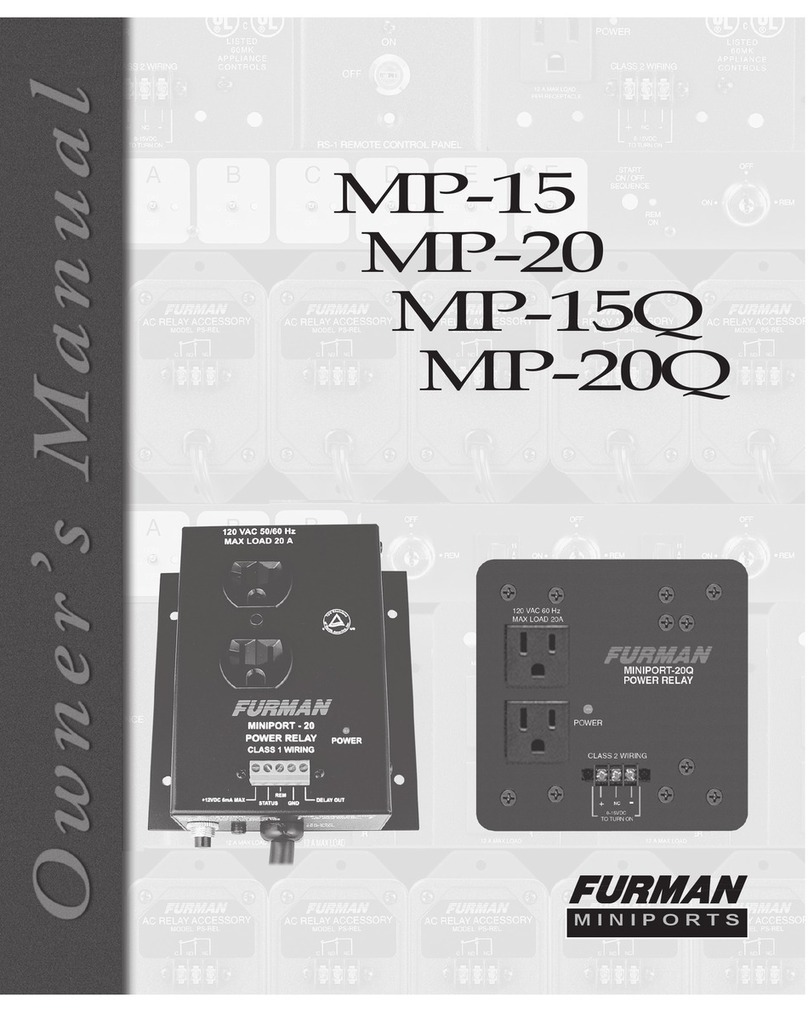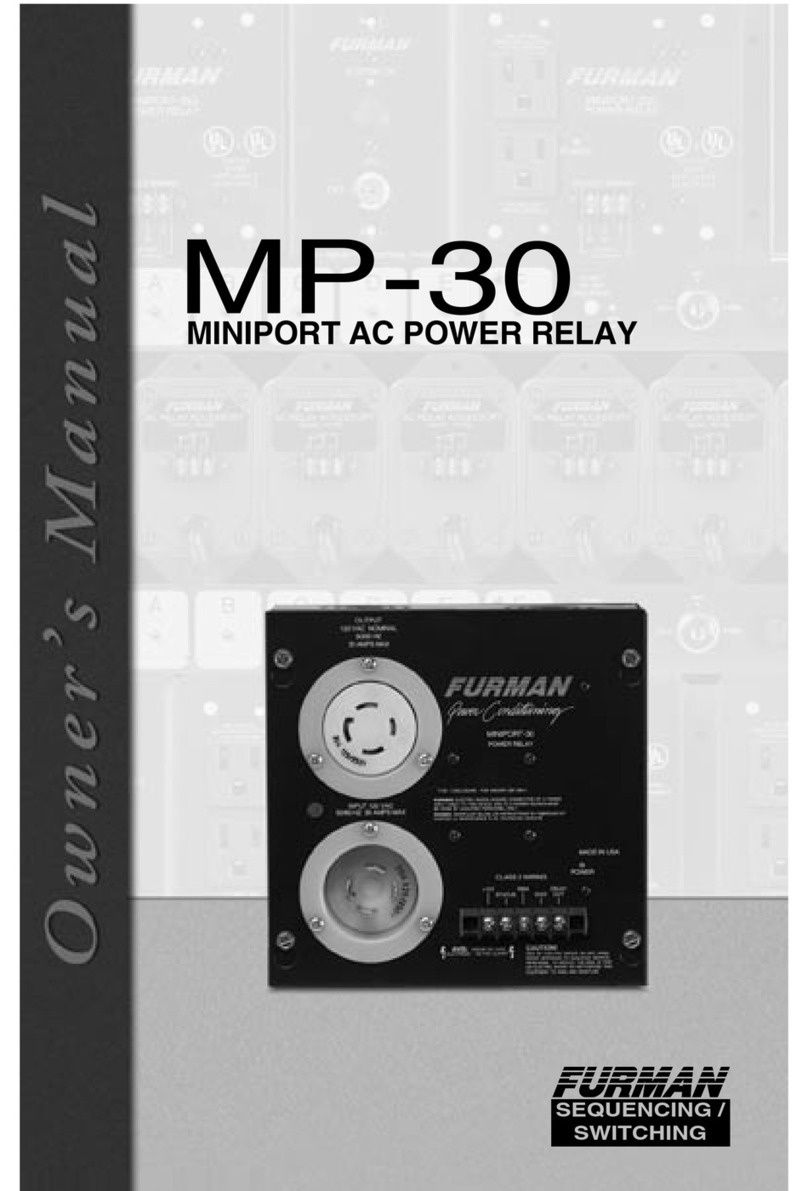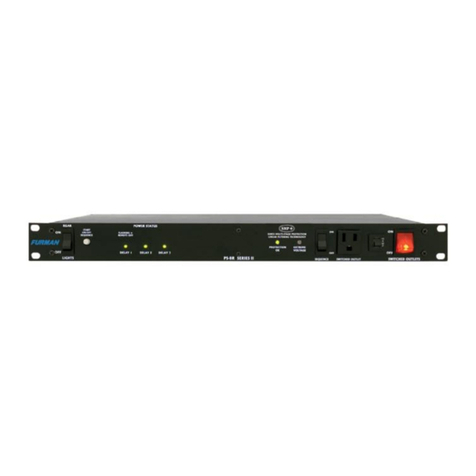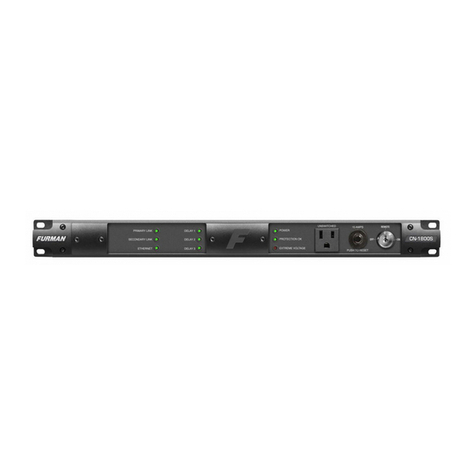
The CN-3600SE is readily adaptable to a wide
range of installation requests and requirements.
It was designed from the ground up to be com-
patible with Furman legacy and third party
equipment. Forced Off inputs and selectable DIP
switch settings are provided to allow easy inter-
face to devices, such as alarm systems.
Additional Features
The CN-3600SE is equipped with LED indica-
tors to provide visual aid in tracking conditions
such as power, protection, sequencing and
communication. The CN-3600SE is supplied by
a 1.5mm^2 AWG, 2.5 meter AC cord. All Con-
tractor Series units are backed by our 15 year
Limited Warranty
Important Safety Instructions
1. Please read and follow all instructions.
2. Please keep these instructions.
3. Please heed all warnings.
4. WARNING: This device is intended for indoor
use only. Do not use this device in or near water.
To reduce the risk of fire or electric shock, do not
expose this device to rain or moisture.
5. CAUTION: Always On receptacles are present,
providing constant AC power. To reduce risk of
shock, please disconnect the CN-3600SE from
AC power before servicing any equipment con-
nected to the CN-3600SE Sequencer.
6. Clean only with dry cloth.
7. CAUTION: Do not install near any heat sources
such as radiators, heat registers, stoves, or other
equipment that may produce heat.
8. Protect the power cord from being walked on
or pinched, particularly at plugs, convenience
receptacles, and the point where they exit the
device.
9. WARNING: The DE-9 RS-232 communica-
tions port provides power for Furman accesso-
ries (e.g. BB-RS232). Please verify pin assign-
ment and protocol before connecting any other
manufacturer’s device to this port.
10. Please, only use accessories specified by the
manufacturer.
11. Refer all servicing to qualified personnel.
Servicing is required when the unit has been
damaged in anyway or fails to operate.
12. WARNING: Do not use power cord as the
main power disconnect. The device is intended
for AC power sequencing.
13. Do not defeat the safety purpose of the
Schuko plug. A Schuko plug has two pins and
a grounding contact or receptacle. If the Schuko
plug does not fit into your outlet, please consult
an electrician for assistance.
14. This device is supplied with a detachable
IEC-C19 to CEE-7/7 Schuko power cord. Any
prospective replacement cord must comply with
the minimum ratings of the line cord originally
supplied with this device and be HAR Certified
for use in the country in which the unit is de-
ployed.
15. WARNING: This device must be connected
to an AC outlet with a protective earth ground
connection.
www.furmancontractor.com • 877-486-4738 4
Security and Safety
SmartSequencing™ 101
SmartSequencing™ technology provides a very
simple means of connecting together a group of
Furman Contractor devices to form a network or
“chain” of sequencers. SmartSequencing™ al-
lows all devices within a chain to be controlled
and queried from a single Primary sequencer.
One of the defining characteristics of SmartSe-
quencing™ technology is its ability to allow any-
one to quickly achieve professional results.
SmartSequencing Hierarchy:
In a SmartSequencing™ network, there can only
be one Primary unit. Secondary units respond
to the commands from the Primary. The Pri-
mary unit manages the communications within
the SmartSequencing™ chain. (This includes
principal communication between the chain of
sequencers and the outside world, e.g. Blue-
BOLT®). Secondary units relay messages and/
or execute commands and queries that have
been routed to them by the Primary unit. The
CN-3600SE can serve as a Primary or Second-
ary sequencer depending on the setting of DIP
Switch #8 – more on this later.
SmartSequencing Communications:
A Furman SmartSequencing™ chain commu-
nicates using a bucket brigade technique. A
Primary sequencer communicates to the first
downstream Secondary sequencer by sending
commands out of its Primary (P) OUT terminals
to the Secondary (S) IN terminals of the next
downstream Secondary sequencer. If there are
additional Secondary sequencers within the
chain, the first Secondary sequencer will com-
municate to the next downstream Secondary
sequencer using its Primary (P) OUT terminals
to the second Secondary (S) Unit’s Secondary IN
terminals. This continues down the chain until
the last Secondary sequencer has received the
message. The last Secondary sequencer will
receive commands into its Secondary (S) IN
terminal port but will not forward the message
because there are no more units downstream.
Forming a chain of sequencers:
Create a SmartSequencing chain by linking the
Primary (P) OUT terminals of the Primary to the
Secondary (S) IN terminals of the first Second-
ary sequencer. To add more sequencers, simply
connect
connect this first upstream Secondary Primary
OUT (P) terminals to the Secondary (S) IN ter-
minals of the next Secondary sequencer down-
stream. This pattern continues until all sequenc-
ers have been linked together as is shown in the
figure below.
Example of SmartLink connections
SmartSequencing is polarity independent, so it
does not matter which OUT (P) terminal is con-
nected to the IN (S) terminals on the next se-
quencer. All that matters is that the connections
proceed in the order in which you would like your
chain of sequencers to activate.
COMM/
POWER
+12V
STAT
REM
GND
P
P
S
S
OUT
IN
SmartSequencing
REMOTE PORT
PRIMARY
P
P
S
S
OUT
IN
PRIMARY UNIT
P
P
S
S
OUT
IN
SECONDARY
SECONDARY
P
P
S
S
SmartSequencing
PRIMARY (OUT)
SECONDARY
SECONDARY UNIT
P
P
S
S
PRIMARY (OUT)
SECONDARY (IN)
SECONDARY UNIT
P
P
S
S
PRIMARY
SECONDARY (IN)
